On a Monday afternoon in the Downtown Eastside, a crowd has gathered on Carrall Street. Friends, fans and curious passersby stop, watching and taking photos of James Hardy, better known as Smokey Devil, spraying the outlines of his newest mural.
As Hardy paints, it’s rare a few minutes pass without hearing “Hey Smokey!” from someone walking by. Day or night, a walk through the neighbourhood always offers the chance of bumping into Hardy as he brings another one of his iconic characters to life on a wall.
Hardy himself has become a fixture of the DTES community nearly as much as his artwork. Whether he is working on a legal wall designated for his graffiti or adding his art to a wall or dumpster, Hardy is often seen painting in the daytime in busy, high-traffic areas. This marks a different approach than most graffiti artists, who prefer to work at night, taking precautions to avoid being spotted by curious onlookers.
As they make their way along Carrall Street, many people offer both a hello and congratulations — the artist’s 54th birthday on March 11 was officially proclaimed “Smokey Devil Day” by Vancouver Mayor Ken Sim at city hall.
For an artist who takes a community living at the intersections of colonialism, mental health crisis and a broken foster-care system as his subject, this is an interesting recognition from a mayor who handily won the recent Vancouver municipal election on a platform that has drawn sustained criticism from Downtown Eastside frontline workers and advocates.
The large plywood wall he’s painting on has been officially designated for his artwork, distinctive for its bold illustration style that nods at the bounce and swagger of the early days of hip-hop and the b-boy era. Hardy’s West Coast influences bring jewel tones together in crisp portraits and illustrations that are accompanied by his recognizable handstyle — a term for the unique handwriting of a graffiti writer — that jumps off the wall.
It’s in his writing where we can almost hear the sound of Hardy’s voice. He writes urgent messages for and about the Downtown Eastside community that he calls home, raising awareness of front-of-mind community issues such as the toxic drug crisis, COVID-19 and missing and murdered women in B.C.
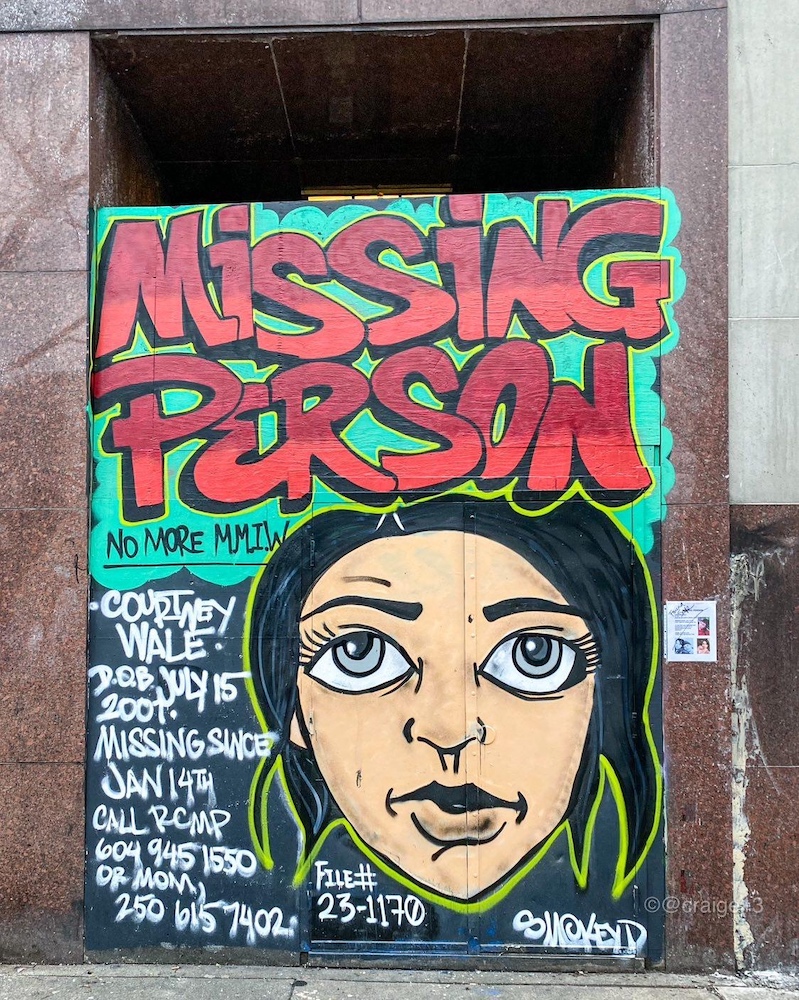
Not everyone loves graffiti. It’s sometimes thought of as a sight for sore eyes. Smokey Devil recognizes this, and has used his mutual admiration from graffiti writers as well as community leaders and business owners to discourage tagging in Chinatown, painting murals to uplift and encourage respect for the neighbourhood.
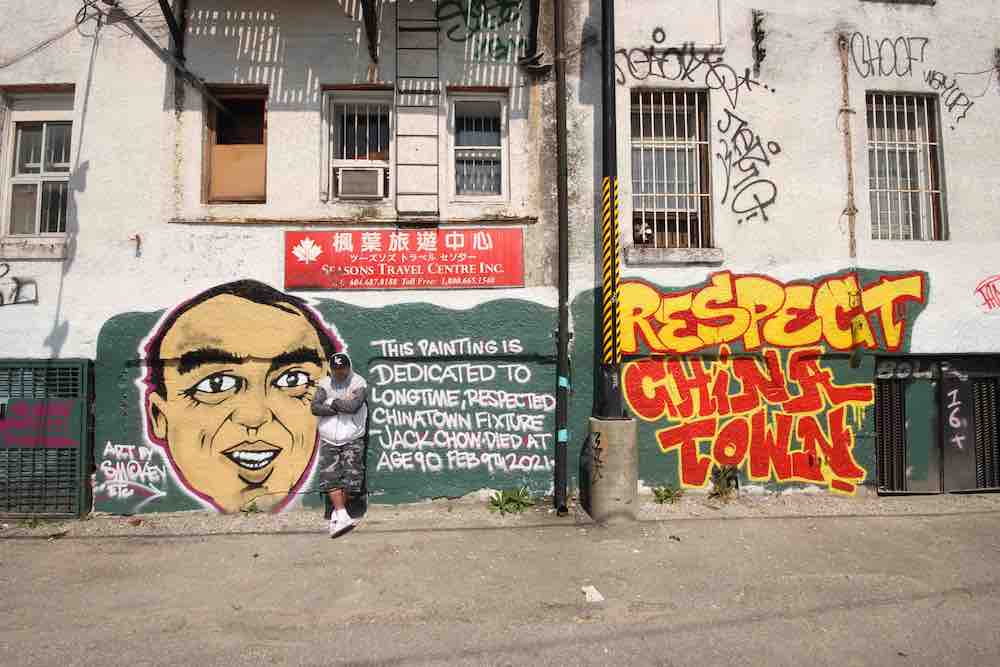
Filmmaker Nathaniel Canuel is one of many people who has been touched by Smokey Devil’s artwork. He has been shooting footage for over two years for his debut documentary, Smokey Devil: Underworld Street Reporter.
Canuel, a videographer for the Canadian Drug Policy Coalition, is also an employee of the Overdose Prevention Society, which is where he first met Hardy. He had been aware of Smokey’s work since his own days of doing graffiti in the neighbourhood as a teenager. But when he finally met him through his work at the OPS at age 35, “I was like, 'Oh my god, you’re my hero basically.'”
Canuel’s documentary offers a raw, unfiltered look into the struggles and triumphs of one of Vancouver’s most well-known graffiti writers. Throughout the documentary, there is no shortage of people willing to express their love and admiration for the graffiti artist — clearly a common sentiment throughout the neighbourhood.
“If you just walk with him for a few blocks, you’ll see, he knows everyone,” says Canuel, reflecting on filming together. “The documentary right now is at about 50 minutes, but I have to add in that part at City Hall, because it’s such a beautiful part of Smokey’s journey.”
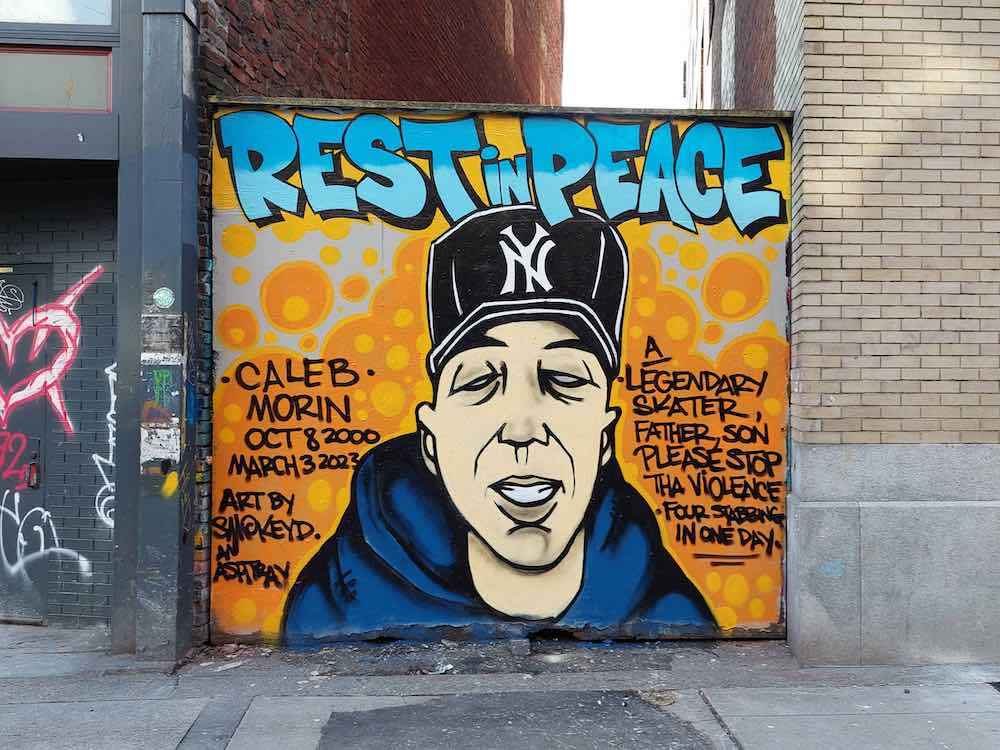
Remembering Caleb Morin
Today, Smokey Devil is painting a memorial to 22-year-old Caleb Morin, a skateboarder and father of two, who passed away on March 3, a day where four separate stabbing incidents took place in the Metro Vancouver area.
“Do you think it looks like him?” the artist asks Trey Helten, manager of the Vancouver Overdose Prevention Society, who is working on the “Rest in Peace” lettering above. The character, nearly finished now, is based on a photo of a young, smiling Morin shared on his memorial page — it’s important to Hardy that his work resembles the people he memorializes. With so many deaths — murders and overdoses — it is easy for these numbers to be reduced to a statistic.
“It’s for everybody to know that it happened, and that they’re gone, and a way to respect them,” Hardy says. “It shows that people do care about them, you know what I mean?”
He started painting graffiti in 1990, and says that after the death of his girlfriend, he painted her in the streets as a memorial — one of the first of many such portraits over decades of doing graffiti.
“It helps me deal with trauma for sure, and there’s so much of it happening,” he says. “A lot of really close people have died, it’s crazy, honestly. Graffiti is a good way for me to deal with it, and it helps a lot of other people out too.”
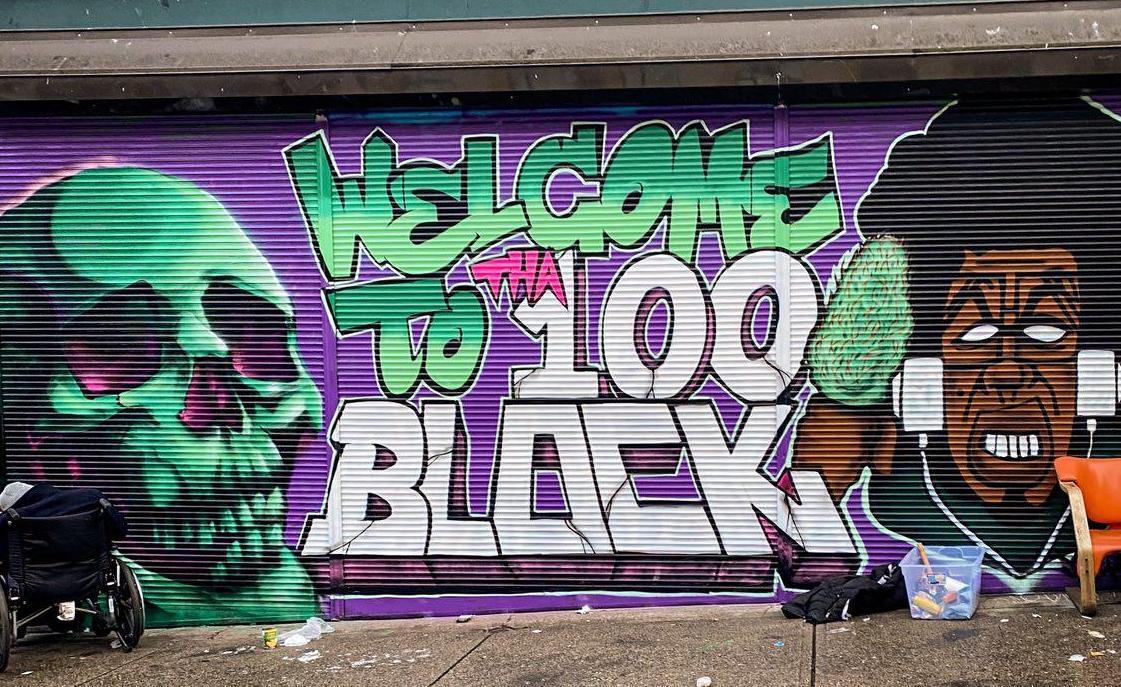
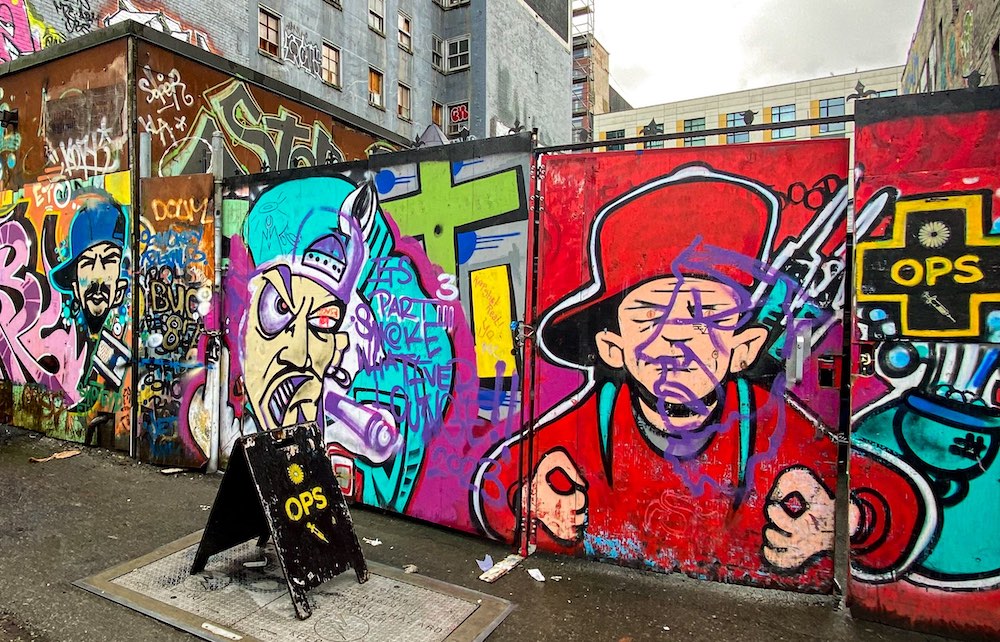
‘A big step for graffiti’
Earlier that day, a small private screening of the documentary took place a few blocks away. One of those in attendance was Vancouver city councillor Brian Montague. “I was fascinated, just watching him paint,” said Montague after the screening. “I was lucky enough to be the one that got to present the proclamation to him, which was awesome — it was great having Smokey and all his people up in City Hall, and to recognize him for building bridges between communities, and doing some of the great work he’s doing. There’s no one silver bullet to fix the problems and challenges down here, but Smokey is part of the solution.”
Reflecting on his recent recognition from the city, “To give me my own day…. It's a wild feeling. I can’t even put it into words, really. I never thought I’d be that recognized, in that form,” Hardy says. “You can get really big in the graffiti world and stuff, but I never thought I’d have the system with me on it, y’know? I always thought they’d be against it. It’s a big step for graffiti, for everyone, not just me — but for graffiti as a whole.”
For his part as a filmmaker, Canuel hopes the documentary can help shine a positive light on the DTES to dispel some of the myths he says have been propagated online about the neighbourhood and community, naming Aaron Gunn’s Vancouver is Dying as one of the more negative hit pieces made recently.
“I really want to try and help make people see that there are really beautiful and positive people living in the Downtown Eastside,” Canuel says. “People don’t really know that — they don’t see it, because no one gets shown it.”
Canuel hopes for everyone to get the opportunity to see the documentary soon, and is planning on holding a number of to-be-announced public screenings in Vancouver. “When you know Smokey, you realize how respected and loved he is here, and if he wins something, it’s kind of like we all win, because that’s just his spirit. He’s a very generous and loving person, and so when something positive happens to him, we all feel really proud and happy.”
Public screening dates for ‘Smokey Devil: Underworld Street Reporter’ will be announced on the film’s Facebook page. ![]()
Read more: Rights + Justice, Film



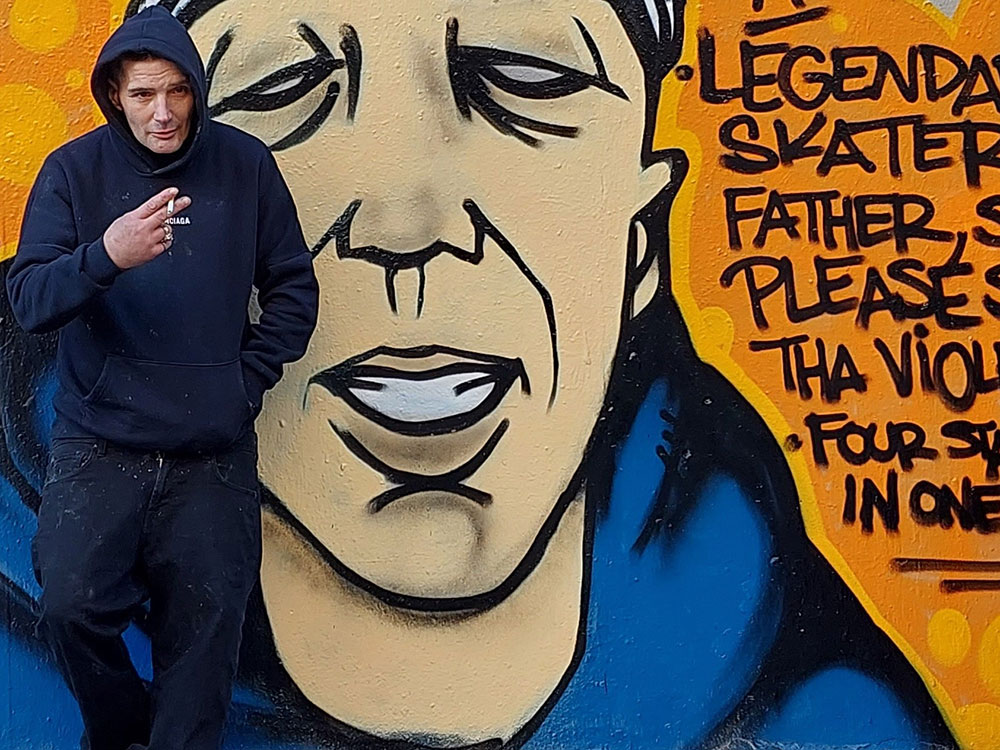












Tyee Commenting Guidelines
Comments that violate guidelines risk being deleted, and violations may result in a temporary or permanent user ban. Maintain the spirit of good conversation to stay in the discussion and be patient with moderators. Comments are reviewed regularly but not in real time.
Do:
Do not: